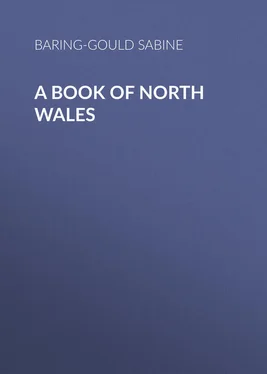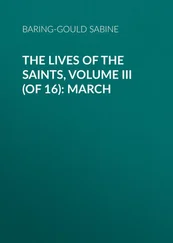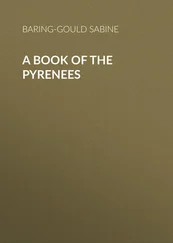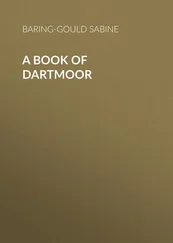Sabine Baring-Gould - A Book of North Wales
Здесь есть возможность читать онлайн «Sabine Baring-Gould - A Book of North Wales» — ознакомительный отрывок электронной книги совершенно бесплатно, а после прочтения отрывка купить полную версию. В некоторых случаях можно слушать аудио, скачать через торрент в формате fb2 и присутствует краткое содержание. Жанр: foreign_antique, foreign_prose, на английском языке. Описание произведения, (предисловие) а так же отзывы посетителей доступны на портале библиотеки ЛибКат.
- Название:A Book of North Wales
- Автор:
- Жанр:
- Год:неизвестен
- ISBN:нет данных
- Рейтинг книги:4 / 5. Голосов: 1
-
Избранное:Добавить в избранное
- Отзывы:
-
Ваша оценка:
- 80
- 1
- 2
- 3
- 4
- 5
A Book of North Wales: краткое содержание, описание и аннотация
Предлагаем к чтению аннотацию, описание, краткое содержание или предисловие (зависит от того, что написал сам автор книги «A Book of North Wales»). Если вы не нашли необходимую информацию о книге — напишите в комментариях, мы постараемся отыскать её.
A Book of North Wales — читать онлайн ознакомительный отрывок
Ниже представлен текст книги, разбитый по страницам. Система сохранения места последней прочитанной страницы, позволяет с удобством читать онлайн бесплатно книгу «A Book of North Wales», без необходимости каждый раз заново искать на чём Вы остановились. Поставьте закладку, и сможете в любой момент перейти на страницу, на которой закончили чтение.
Интервал:
Закладка:
The somewhat similar monument is at Llanbabo, in the north-west of the island. Pabo, after long and stubborn fighting against the Picts in North Britain, was driven to take refuge in Wales, and was kindly received by the prince of Powys. He bears the title of “The Pillar of Britain.”
On the north coast is Pentraeth, at the head of Red Wharf Bay, and here may be seen the Three Leaps, by which hangs a tale.
Einion, son of Gwalchmai, was lord of Trefeilir. Now there was a young lady named Angharad, daughter of Ednyfed Fychan, who was so beautiful, and was an heiress of so much, that she had many suitors. As she professed herself unable to decide among such an embarras de richesses of nice young men, her father proposed that she should marry the youth who could jump the furthest. She agreed. When the suitors came to try their powers, Einion surpassed the rest, for with a hop, skip, and a jump he covered fifty feet. The hop, skip, and jump are marked by three stones, which remain to this day in the dingle of Plas Gwyn. So Einion became the husband of Angharad.
His happiness was of short duration, for he was summoned by Owen Gwynedd to assist in driving the Flemings out of South Wales, who had been settled there by Henry I. This was in 1137. Einion was away for a good many years, constantly engaged in fighting, and when he did return to Trefeilir he found that on that day his wife had given her hand to another suitor, supposing that Einion was dead. Einion remained without and sent a servant within to summon her to come forth, and then, striking his harp, he sang a lay of reproach that has been preserved. Then he entered the house and ejected the gentleman who had presumed to invade his premises.
The Parys Mountain rises to the height of 420 feet, and is pretty completely honeycombed with mines, as it is an almost solid lump of copper. It has been worked continually since the times of the Romans, and had probably been quarried at in the Bronze Age before that.
The little town of Amlwch is dominated by this mountain. It consists of two parts, the town proper and the port, and a considerable manufacture of chemical manures is carried on in it. Altogether Amlwch is in itself not a particularly attractive place. It has many spots of interest about it, and from it can be reached Bull Bay, where there are good sands, and the place is growing in favour. To the east the adjoining parish is Llaneilian, that possesses a quaint and interesting church, which, however, has suffered cruelly from unintelligent “restoration.” Like the majority of Welsh village churches, it has no side aisles; it is a cross church, with battlements and a western tower, covered from top to bottom in a panoply of slates. At the “restoration” the old oak seats were cast forth to make room for deal benches in preference, and the fine rood-screen with its loft had all the dainty tracery stripped from its panels and openings and destroyed, so that now it is a mere skeleton.
There is a curious little chapel at the south-east end of the church, differently orientated, and with a covered passage to it from the chancel.
This chapel has a well-preserved and good carved oak roof, which the present rector has saved from destruction by damp. Here is the base of the shrine of S. Elian. It is of wood, and the panels were formerly carved, but the tracery is gone. Into this people crawled, and if they succeeded in turning themselves about within, believed that they would get cured of any disease they might have, or, according to another version, would have their lives extended by five years.
A painting of S. Elian by an Italian artist of the seventeenth century is kept in the church, but it is devoid of merit and is in bad preservation. There is also a pair of wooden gefail gwn , or dog-tongs, bearing the date 1748.
Above Llaneilian rises the hill on which was Caswallon’s llys , or court. The story goes that Caswallon promised to Elian as much land as a stag he was hunting could run round in the day, and the deer’s spring, a leap over a rent in the rocks, is shown to this day, but it is not any longer in the parish of the saint.
A late rector of Llaneilian, John Jones, who died in 1870, and had been curate of the parish for twenty years and after that rector for thirty-three, kept his harper and also a pack of hounds.
To the west of Amlwch, in a bold situation, is Llanbadrig. The church was founded, not by the Apostle of the Irish, but by a namesake who lived later and was a member of S. Cybi’s monastery at Holyhead. According to legend, when he was on his way back from Iona, where he had visited S. Columba, his frail boat was wrecked on Ynys Badrig, or the Middle Mouse, an islet off the coast. Patrick succeeded in making his way to the land, drank of a fountain near the shore, and scrambled up the rock, in which the marks of his feet are still to be seen, to where is the church which he planted on the edge of the precipice in commemoration of his providential escape.
Within the church is a very rude cross that may well date from the time of S. Patrick. The niche at the east end of the chancel that now contains a representation of “Salvator Mundi” has twisted serpents on the pedestal, and formerly contained a figure of the patron saint, who was confounded with the Apostle of Ireland.
The parish of Llanddona is in evil repute, as a nest of witches. The story goes that a boat came ashore in Red Wharf Bay without rudder or oars, containing women and men in a condition of great destitution. They were Irish. Now it was a common custom in Ireland to punish malefactors by putting them in a wicker-work coracle, covered by a single hide, without allowing them oars or rudder. So when S. Patrick converted Maughold, the robber, he bade him drift oarless on the sea, his feet chained together. He was swept by the winds and waves to the Isle of Man, and eventually became bishop there. Now when the good people of Llanddona saw this boat come ashore thus unprovided with the necessary apparatus for its guidance, they concluded that those on board were criminals, and would have nothing to do with them. They would have sent them adrift again had not a spring of clear water burst forth on the sands where the coracle had come ashore. The spring still flows. This was decisive as a token that Heaven accepted the punishment of the crew, and desired them to rest where they had landed.
So these strangers remained, and were suffered to build cottages, but for generations they continued apart from the Welsh inhabitants, and they maintained their evil propensities. The men lived by smuggling, and the women supported themselves by the exercise of witchcraft. It was not possible to overcome the smugglers in a fray, for they carried about with them a black fly tied in a knot of their kerchief, and the moment that the knot was undone the fly flew at the eyes of their opponents and blinded them. The women, old and young, were dreaded for the power they possessed of cursing those who refused them whatsoever they asked – a fowl, a loaf of bread, eggs, part of a pig. If this were denied them, they would imprecate the most awful curses, of which here is one: —
“May he wander for ages
And find at each step a stile,
And at every stile find a fall,
And at every fall a broken bone;
Not the largest, nor the least bone,
But the chief neck bone, each time.”
If the Llanddona witches attended a market, and bid for anything, no one ventured to bid against them. But are not most Welsh girls witches? – witches, however, that win and do not revolt like those of Llanddona.
On the further side of Red Wharf Bay, where, by the way, there is an hotel, and where lodgings may be had, is Llanfair Mathafarn Eithaf. There are three parishes of the name of Llanfair in the island. Llanfair means the Llan or Church of S. Mary, the M in combination becoming f , as Llanfihangel signifies the Church of Mi[chael] the Angel.
Читать дальшеИнтервал:
Закладка:
Похожие книги на «A Book of North Wales»
Представляем Вашему вниманию похожие книги на «A Book of North Wales» списком для выбора. Мы отобрали схожую по названию и смыслу литературу в надежде предоставить читателям больше вариантов отыскать новые, интересные, ещё непрочитанные произведения.
Обсуждение, отзывы о книге «A Book of North Wales» и просто собственные мнения читателей. Оставьте ваши комментарии, напишите, что Вы думаете о произведении, его смысле или главных героях. Укажите что конкретно понравилось, а что нет, и почему Вы так считаете.












